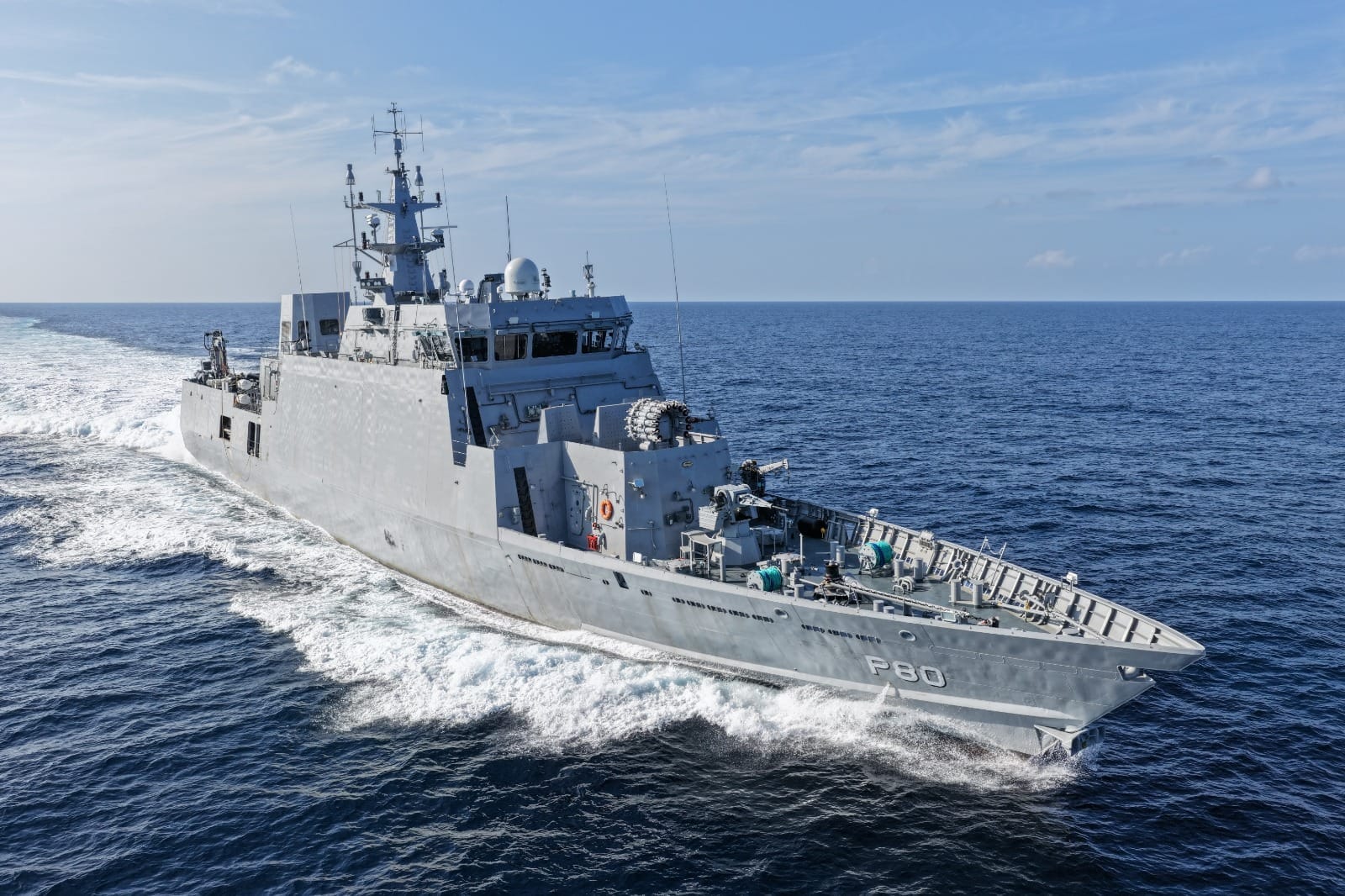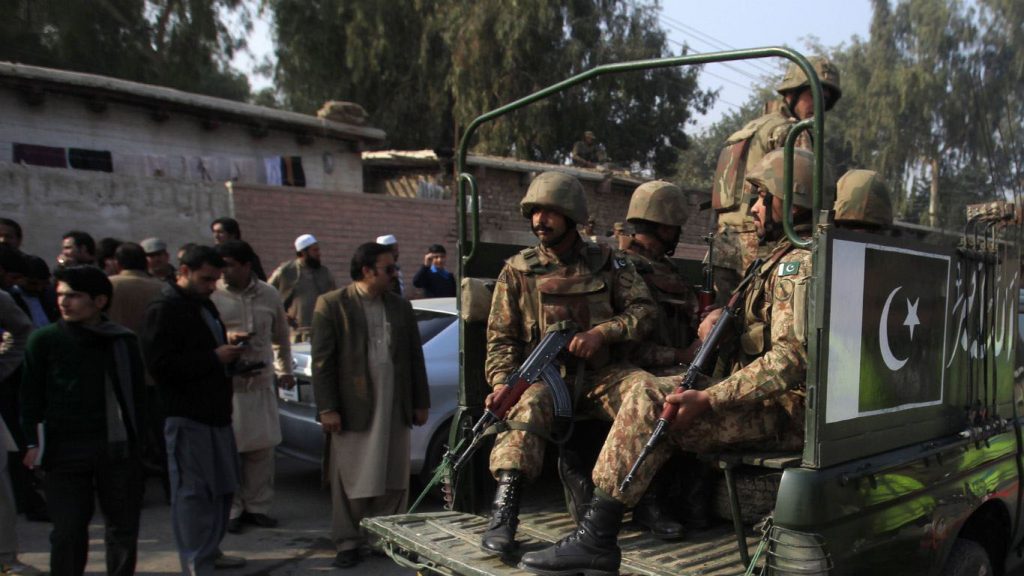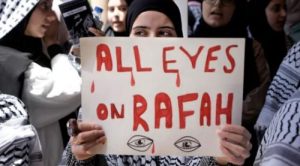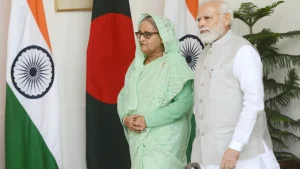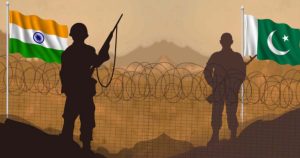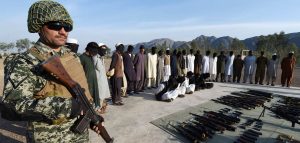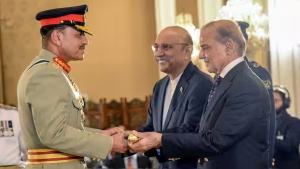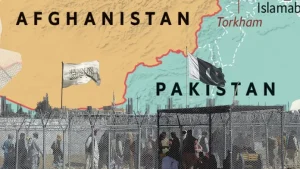Overview
According to the South Asia Terrorism Portal’s database, around 95 terrorist attacks occurred in Pakistan in July, killing 327 people, including 127 security personnel. Alarmingly, five to six mid-ranking Pakistani military officials were also among the dead, underscoring the increasing lethality of terrorist attacks amid the intensifying conflict between terrorist groups and security forces. In June, 86 violent incidents claimed 224 lives. Consequently, both terrorist incidents and killings have surged by 10% and 46%, respectively. While the number of attacks have surged moderately, the alarming increase in killings underscores terrorist groups’ tactical shift to high-profile, coordinated attacks. In doing so, terrorist groups are trying to expand their urban footprints to evolve their tactics from traditional guerilla fighting to urban terrorism. This is visible by Tehreek-e-Taliban Pakistan’s (TTP) efforts to expand into South Punjab, especially the Dera Ghazi Khan and Mianwali districts abutting Khyber Pakhtunkhwa. Likewise, Baloch separatists are focusing on briefly capturing remote towns and blocking highways to demonstrate their ability to challenge the state’s writ.
In July, TTP and militant factions linked to Ittehad-ul-Mujahideen Pakistan (IMP) demonstrated technological sophistication by frequently employing quadcopters to target police stations, check posts and military convoys in the Newly Merged Districts (NMDs) and southern Khyber Pakhtunkhwa, especially Bannu.
Throughout July, frequent attempts by Afghanistan-based terrorist groups to cross into Pakistan in large numbers emerged as another alarming trend. Though many of these attempts were repulsed, the unusually large presence of TTP militants in Orakzai, Bajaur and Khyber districts indicates a concerted effort to relocate to these areas ahead of winters, aiming to quietly entrench their presence. This movement is also linked to TTP’s turf war with IMP-linked militant factions, as discussed below. In response to these infiltration efforts, Pakistan’s Interior Minister Mohsin Naqvi met with his Afghan counterpart, Sirajuddin Haqqani, to discuss counterterrorism cooperation. Following the meeting, some TTP families were reportedly shifted from Kunar to Ghazni and Zabul provinces.
In response, Pakistan expedited Intelligence Based Operations (IBOs) and launched broader counterterrorism campaigns in Khyber Pakhtunkhwa and Balochistan to disperse militant buildups, such as in the Mamond subdistrict of Bajaur. Also, the Khyber Pakhtunkhwa police deployed anti-drone jamming technology to detect and neutralise quadcopter attacks by militants. Concurrently, the Pakistan Virtual Asset Regulatory Authority (PVARA) was also inaugurated to regulate virtual financial assets ahead of the planned launch of cryptocurrency. The government also restructured the Frontier Constabulary (FC) – different from the paramilitary Frontier Crops) – and expanded its mandate as a federal law enforcement agency in addition to its original mandate in Khyber Pakhtunkhwa. Finally, Pakistan stepped up efforts to report and take down social media accounts affiliated with various terrorist groups that glorify violent extremism and spread hate material.
Trends
Drone Attacks
Approximately seven drone attacks were reported from different areas of Khyber Pakhtunkhwa in July, targeting civilian properties, police stations, security check posts, and military convoys. The frequent use of commercially available quadcopters by terrorist groups indicates both their easy availability and technical expertise in weaponizing them.
On July 10, two separate quadcopter attacks in Bannu targeted civilians and a police station, resulting in the death of a woman and injuries to three others, including children. OnJuly 20, a drone strike hit a house in Khyber district’s Bara area, injuring two people. On July 22, the Hafiz Gul Bahadur Group targeted a military vehicle with a quadcopter in Bannu cantonment area. A day later,, on July 23, three soldiers lost their lives and three others, including a captain, were injured when a drone dropped a mortar shell on the Mira Kally security post in Upper South Waziristan. Reportedly, the terrorists first engaged the troops with small arms fire and simultaneously dropped a mortar shell via drone into the post. On the same day, another drone attack targeted a check post on the Bannu-Lakki Marwat border, injuring six security personnel. A final drone attack was reported on July 31, targeting a police station in Bannu, although it caused no casualties or material damage.
Since June, at least eight drone attacks have been reported from Bannu alone, underscoring a dangerous escalation as terrorist groups continue to hone the use emerging technologies for surveillance and attacks, turning them into a lethal tactical advantage. This innovation through use of drones has narrowed the technological gap, reducing the state’s tactical superiority. The challenge of establishing deterrence in the digital and aerial space opens the door to a new domain of asymmetric pressure, with strategic consequences.
Since 2024, footage of drone strikes has been quietly circulating through TTP’s unofficial media channels, while official communications have avoided directly acknowledging these attacks. This changed in 2025, when IMP-affiliated factions began openly claiming responsibility for these drone attacks. The move drew criticism from pro-TTP channels on Telegram, on grounds that public acknowledgement was strategically unsound. Nevertheless, IMP persisted in claiming responsibility for the attacks, and eventually, TTP leadership followed suit, marking a shift in the group’s propaganda posture.
A Series of Jirgas Amid Deteriorating Security Situation and Impending Military Operations
As the military intensified efforts to launch large-scale military operations in response to militant buildups in Bajaur, North Waziristan and Khyber districts, the Khyber Pakhtunkhwa government held a series of jirgas across the province in July. These jirgas were held to address public concerns regarding potential military operations and their impact on civilian populations. In these jirgas, local communities opposed military operations in civilian areas and urged long-term, non-violent solutions rooted in local Pashtun customs and traditions to address militancy. They also urged TTP to either return to Afghanistan or vacate the civilian areas. These jirgas were held in Bannu, Makin, Orakzai, South and North Waziristan and Khyber districts, emphasising the need for greater coordination between local communities and security forces, and prioritising IBOs over full-scale military offensives to ensure public safety.
Ahead of Operation Sarbakaf, seven rounds of jirgas were held in Bajaur to convince the TTP to return to Afghanistan or leave the civilian areas. Intelligence reports indicated that approximately 1,200 to 1,400 TTP militants, including 400 from Afghanistan and some Uzbek fighters, had entered Bajaur’s Mamond subdistrict in July, raising serious security concerns. A tentative ceasefire was brokered and confirmed on August 3 between the local population and the TTP. However, the TTP’s refusal to leave Bajaur led to a deadlock, and the ceasefire ended on August 10. With Mamond’s local population estimated between 300,000 to 400,000, local residents have started evacuating as the military commenced operations.
In Khyber Agency, a separate jirga between the Bar Qambarkhel tribe and TTP in Khyber Agency also resulted in a ceasefire. The jirga followed public outrage after a young girl was killed by TTP militants during a firing incident, allegedly after her parents refused to pay Ushr (religious donations). The incident sparked widespread protests by Bar Qambarkhel tribe in Tirah Valley, with demonstrators surrounding TTP’s Markaz (headquarters). Resultantly, after two rounds of negotiations, TTP agreed to five jirga demands:
- No use of private houses as bunkers.
- No use of civilians as human shields.
- No extortion in the name of Zakat or Ushr.
- Non-interference in local disputes or jirgas
- An end to the abduction or torture of locals, with accountability for previous incidents.
It was agreed that any violation of the ceasefire terms would be dealt with under Sharia law. Though the jirga urged TTP to pull out of Tirah valley, this demand was not included in the final draft. The deal also lacked inclusivity, as other local tribes were not party to it and feared the arrangement would collapse. They pointed out that the core issue – the absence of a formal truce between the TTP and security forces – remains unresolved. Moreover, the presence of other militant factions, such as Lashkar-e-Islam (LeI) and Hafiz Gul Bahadur Group, in various parts of Khyber complicates the security landscape. Hence, the truce of TTP with one tribe alone is not going to solve this complicated threat picture.
TTP’s Warning to People of North Waziristan to stay Away from Military Operations
In a recent statement, the TTP warned residents of North Waziristan, including police, local peace committees, and anti-TTP militias, to distance themselves from the military’s counterterrorism efforts, accusing the state of using civilians as human shields. The group maintained that members of peace committees had previously been spared to allow them the opportunity to disassociate from the military’s agenda. The TTP further alleged that the Pakistani military was pressuring locals to take up arms against the group and drew parallels with the 2014 Zarb-e-Azb operation, evoking memories of displacement and destruction. The group played on the local fears of large-scale displacement and extended an olive branch to the people, i.e., they would not be targeted if they refrained from taking up arms.
The TTP is cleverly using a mix of threats and incentives in its message to the residents of North Waziristan, exploiting local fears of a militarised counterterrorism approach. It has positioned itself at the intersection of this fault line while hollowing out governance from the ground up by systematically, albeit discreetly, eliminating tribal elders, religious scholars and politicians – who act as the connective tissue between the state and society – and assert itself in that governance vacuum as an alternative authority.
In its propaganda, the TTP has amplified Aman Pasoons (peace marches) against proposed military operations. It has lavished praise on local communities for showing unity and coordination in defying military pressure. The group also shares videos and media reports highlighting damage to public and private property, as well as civilian casualties during counterterrorism operations, while expressing sympathy with the locals. In doing so, it portrays itself as the self-appointed defender of Pashtun rights, masking its militant violence and extremist agenda.
For instance, it gave extensive coverage to a child killed during an exchange of fire between security forces and militants in the Bajaur district. It also issued a video via Umar Media showing civilian causalities during military operations in Tank and Khyber, framing the military as a gross human rights violator and aggressor. Through such posturing, the TTP seeks to win local sympathies on the one hand, and on the other, create a narrative against military operations by exploiting local fears.
The TTP also celebrated the suspension of 42 police personnel who had refused to perform counterterrorism duties in Orakzai., portraying the incident as its victory and defeat for the military. It is worth noting that, through repeated statements, the TTP has warned police and other civilian law enforcement agencies to quit their jobs and explore alternative sources of livelihoods, rather than serving as a shield for the military against the group. The TTP also encouraged people to prevent their children from joining the military, urging them to save their sons from becoming part of its war against the armed forces.
TTP-IMP Turf War Over Allegiances of Local Militant Faction
On July 11, the TTP claimed that the Qari Shakeel militant group, under the command of militant commander Marwan Shah, had pledged allegiance to TTP chief Nur Wali Mehsud. In its statement, the TTP also urged other militant factions to join its ranks in order to forge a unified and coordinated front to establish a Taliban-like Sharia state in Pakistan. Similarly, on July 22, the TTP claimed that another group from Balochistan’s Kalat district had joined it under militant commander Maulvi Muhamamd Baloch.
However, the TTP’s claim regarding the inclusion of the Qari Shakeel group was disputed by its splinter faction, Jamaat-ul-Ahrar (JuA), bringing into sharp focus internal divisions within the former. Members of the Qari Shakeel group are considered close associates of the slain TTP commander Qari Shakeel Haqqani, one of the group’s founding members. Shakeel parted ways with the TTP in 2014 and co-founded JuA alongside Umar Khalid Khorasani. JuA, through its propaganda arm Ghazi Media, has rejected TTP’s claim, maintaining that there is no one by the name of Abu Marwan closely associated with Shakeel.
On the other hand, in a significant shift, the IMP-linked LeI has officially announced for the first time that a commander from Ladha, South Waziristan, TTP’s traditional stronghold, has joined its ranks. LeI has claimed that a group led by Batur, a former associate of slain TTP leader Hakeemullah Mehsud, has joined the group. Hitherto, LeI had been confined to a few areas in Khyber and its claimed expansion into South Waziristan follows a recent similar move by the Hafiz Gul Bahadur Group. It is worth noting that TTP recently moved a significant number of its fighters into Khyber, as discussed above. Hence, a tit-for-tat pattern is visible, with IMP factions trying to make inroads into TTP’s traditional strongholds, while the latter is pushing back by deploying its fighters into their backyards, i.e., Khyber and North Waziristan.
BLF’s Multifaceted Attacks on Critical Infrastructure, Security Forces and Punjabi Travellers
Between July 8-11, the Baloch Liberation Front (BLF) launched Operation Baam (or Operation Dawn) and claimed multiple attacks targeting security forces, highways, passenger buses, and critical infrastructure across Balochistan. The group also claimed responsibility for killing 27 people, including 18 security personnel, during this spate of attacks. In recent years, Baloch separatist groups have shifted their tactics from traditional hit-and-run guerilla operations to more organized and territorial focused assaults.
On July 11, BLF militants stopped two Punjab-bound passenger buses on the Zhob-Loralai district border near the N-70 highway and killed ten ethnic Punjabis after confirming their ethnicity and Punjab addresses through identity card checks. Similarly, on July 17, another passenger bus travelling from Karachi to Quetta was attacked near Kalat district, resulting in the deaths of three people- including two Karachi-based singers – and injuries to 13 others.
In the first six months of 2025, at least 14 attacks targeting ethnic Punjabis have been recorded in Balochistan, claiming 55 lives. Baloch separatists frequently block main highways, intercept passenger buses, and summarily execute Punjabis after identifying them through national identity card inspections.
Third Attack on Jaffer Express Train
On July 29, Baloch militants derailed three coaches of the Jaffar Express train near Sindh’s Shikarpur district through an explosive device, injuring one person. This marks the third attack on this train line in 2025, following a June bombing claimed by the Baloch Republican Guard and a hijacking in March.
Response
Arrests, Operations and Anti-terrorism Raids
In July, Pakistan intensified its operations along the Pakistan-Afghanistan border areas in response to increasingly frequent and large-scale infiltration attempts, some of which were intercepted and neutralised, resulting in 58 militant casualties. At least five TTP militants were also injured in these operations, which additionally foiled two suicide attacks.
Following the failure of the Bajaur Aman Jirga with the TTP, locals in the Mamond subdistrict have started vacating the area as the Pakistan Army haslaunched a military operation. During this period, both the TTP and the Pakistan Army strengthened their respective positions through additional reinforcements. The Army has sealed the border-crossing and encircled TTP militants, whose numbers are estimated between 1,200 and 1,400. security forces also imposed a curfew from July 29 to31 to restrict movement, especially on main highways, in order to minimise civilian casualties and property damage. Reportedly, at least 16 villages have been identified where TTP militants have infiltrated.The TTP is attempting to quietly re-establish territorial control in parts of the Newly Merged Districts (NMDs) ahead of the winter season, in an effort to entrench its presence. Signs of the TTP’s build up in Bajaur were visible from the beginning of 2025, as indicated by regular public complaints and videos circulated by Umar Media on encrypted social media accounts.
On July 6, security forces killed four TTP militants in Taunsa Sharif, Dera Ghazi Khan district, near the Khyber Pakhtunkhwa-Punjab border. The TTP’s footprint in South Punjab, especially in Dera Ghazi Khan and Mianwali districts, is gradually increasing, as evidenced by the group’s frequent terrorist attacks, arrests and killings of its militants in counterterrorism operations, and the visible presence of its fighters in propaganda videos released by Umar Media from Mianwali and Dera Ghazi Khan.
The TTP is attempting to evolve its tactics from traditional guerilla warfare to urban terrorism, and its expansion into South Punjab is part of this broader strategy. A June installment of Umar Media’s video series Rasm-e-Muhabbat (Tradition of Love) – dedicated to eulogies and tributes to slain militants- acknowledged the killing of the TTP’s intelligence head in Punjab, chief Habib ur Rehman, alias Abdul Basir Shami. He hailed from a middle-class Punjabi family and joined the TTP after returning from Syria, having been steeped in Salafi ideology from an early age. After Muneeb Jutt, he was the second most prominent Punjabi militant within the TTP, indicating the group’s growing recruitment inroads in Punjab, particularly its ability to recruit educated urban youth.
Pakistani Interior Minister Mohsin Naqvi’s Meeting with Sirajuddin Haqqani to Discuss Counterterrorism
In July, Pakistan’s Interior Minister Mohsin Naqvi visited Kabul, where he held a crucial meeting with his counterpart Sirajuddin Haqqani to discuss counterterrorism efforts. The meeting took place against the backdrop of extensive diplomatic engagement between the two sides, resulting in the revival of the Joint Coordination Committee (JCC) and the upgrading of diplomatic ties from chargé d’affaires to ambassador-level represenation. The two officials discussed a range of issues, including theTTP, management of the Afghanistan-Pakistan border, prevention of narcotics trafficking, mechanisms to regulate cross-border movement, and the repatriation of Afghan refugees.
Following this meeting, a special Taliban committee has moved and relocated several TTP families from Kunar to Ghazni and Zabul provinces. Earlier this year, some TTP families from the Golan camp in Khost had already been moved to refugee camps in Ghazni. The Taliban provided each family with a $40 monthly allowance, transportation costs, and funds for basic necessities. The relocatedfamilies were not to be photographed, registered for biometrics, or documented in any official capacity. The Taliban have assured them of continued financial assistance. TTP fighters were reportedly offered relocation options in Logar, Maidan Wardak, Kunduz, and Baghlan provinces, areas where Mehsud and Waziri tribal members reside. However, the TTP declined the offer, citing concerns that moving farther from the border would complicate access to military supplies.
Khyber Pakhtunkhwa Police Incorporating Anti-Drone Jamming Technology
To counter the rising threat of quadcopter attacks by militants, the Khyber Pakhtunkhwa police have deployed anti-drone jamming technology, which was initially used during the month of Muharram to ensure security and sectarian harmony in the province. The system comprises a jamming mechanism capable of detecting and neutralising suspicious drone activity within a three-kilometre radius.
Pakistan Virtual Asset Regulatory Authority
As Pakistan prepares to launch its cryptocurrency, the government is also taking steps to secure digital assets through robust regulatory mechanisms aimed at preventing terrorist financing. In this context, the government has approved the establishment of Pakistan Virtual Asset Regulatory Authority (PVARA) under the Virtual Asset Ordinance 2025, also referred to as the Virtual Asset Act 2025. According to official sources, PVARA is an independent federal agency responsible for licensing, regulating, and supervising virtual asset entities. It has been empowered to ensure transparency, compliance, financial integrity, and the prevention of illicit activities, in alignment with international standards, including those of the Financial Action Task Force (FATF).
Expansion and Restructuring of Frontier Constabulary into Federal Constabulary
On July 3, the federal government announced that it would restructure the Frontier Constabulary into a new Federal Constabulary. The revamped force will comprise two divisions: a Security Division based on existing FC personnel, and a Federal Reserve Division, which will be tasked with riot control and special protection duties. However, opposition parties such as Pakistan Tehreek- e-Insaf (PTI) and Awami National Party (ANP) have raised concerns, warning of central overreach and accusing the federal government of undermining the federation by infringing upon the rights of the people of Khyber Pakhtunkhwa (KPK). While the reform is being presented as a step toward improved coordination and national stability, legal experts and rights groups have criticised it for bypassing parliamentary procedures.
Social Media Content Moderation
In addition, Pakistan has urged global social media platforms to block hundreds of accounts linked to banned militant groups such as the TTP, BLA, and ISKP, which use platforms like X, Facebook, Instagram, and Telegram to disseminate propaganda, glorify extremist ideologies, and incite violence. Pakistani authorities have identified 481 such accounts and are urging tech companies to remove or disable them. Resultantly, some of these accounts have been taken down, while others remain active.
Conclusion
Pakistan’s militant landscape is evolving rapidly, with the infusion of new groups, emerging technologies, and cross-border militant sanctuaries increasingly overwhelming state institutions. The grievances of local communities – actively exploited by groups like TTP to undermine counterterrorism operations – further impede the state’s ability to reassert control effectively. The persistent state-society disconnect in KPK points to the absence of an integrated political-security paradigm, thereby entrenching cycles of rebellion, repression, and relapse.
Despite these challenges, Pakistan’ss evolving, multifaceted counterterrorism approach was visible in July, as where it simultaneously pursued multiple tracks: diplomatic engagement with Kabul on counterterrorism cooperation; coordination with social media companies to remove militant accounts; the deployment of anti-drone jamming technology, and the restructuring of law enforcement institutions. However, these efforts will only bear lasting results if political and humanitarian grievances are addressed in tandem with security measures.



